2. Strategic export platform
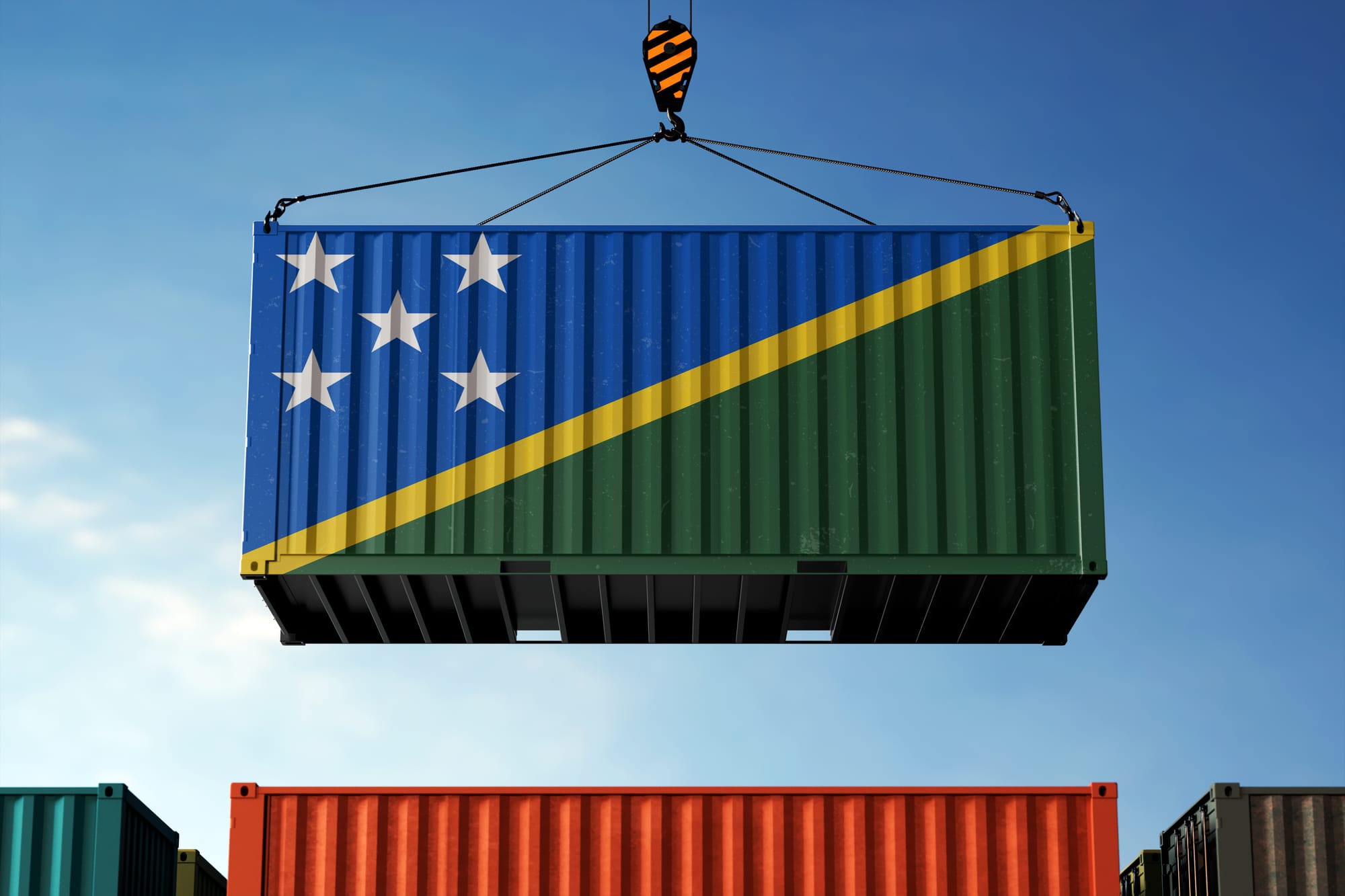
Located in the heart of the Pacific, Solomon Islands offers a strategic advantage as a gateway to both regional and global markets. Preferential trade agreements provide access to over 2.9 billion consumers, while expanding air and maritime connections link the country directly with Asia and Oceania. This growing connectivity strengthens Solomon Islands’ role in regional integration and positions it as an attractive platform for trade, logistics, and value-added investment across the Pacific.
Export platform to 5 continents, with preferential market access to over 2.9 billion people across 62 countries
- Preferential access to key global markets through GDP-LDC: Solomon Islands enjoys duty-free and quota-free access to major economies across five continents through the Generalized System of Preferences (GSP) for Least Developed Countries (LDC). This preferential treatment enhances the competitiveness of Solomon Islands’ exports, particularly in sectors such as fisheries, agriculture, and forestry, by reducing trade barriers and improving market entry conditions.
- Regional trade advantage in the Pacific: Through PACER Plus and PICTA free trade agreements, Solomon Islands has preferential access to 15 Pacific Island countries, including Australia and New Zealand. These agreements strengthen regional integration, reduce tariffs, and create opportunities for cross-border investment and trade in goods and services, making the country a stronger player in Pacific value chains.
- Globally connected as a WTO member: As a member of the World Trade Organization since 1996, Solomon Islands is fully integrated into the global trading system. WTO membership ensures transparent, rules-based trade practices, builds investor confidence, and provides the country with a platform to participate in global negotiations that shape international trade and investment frameworks.
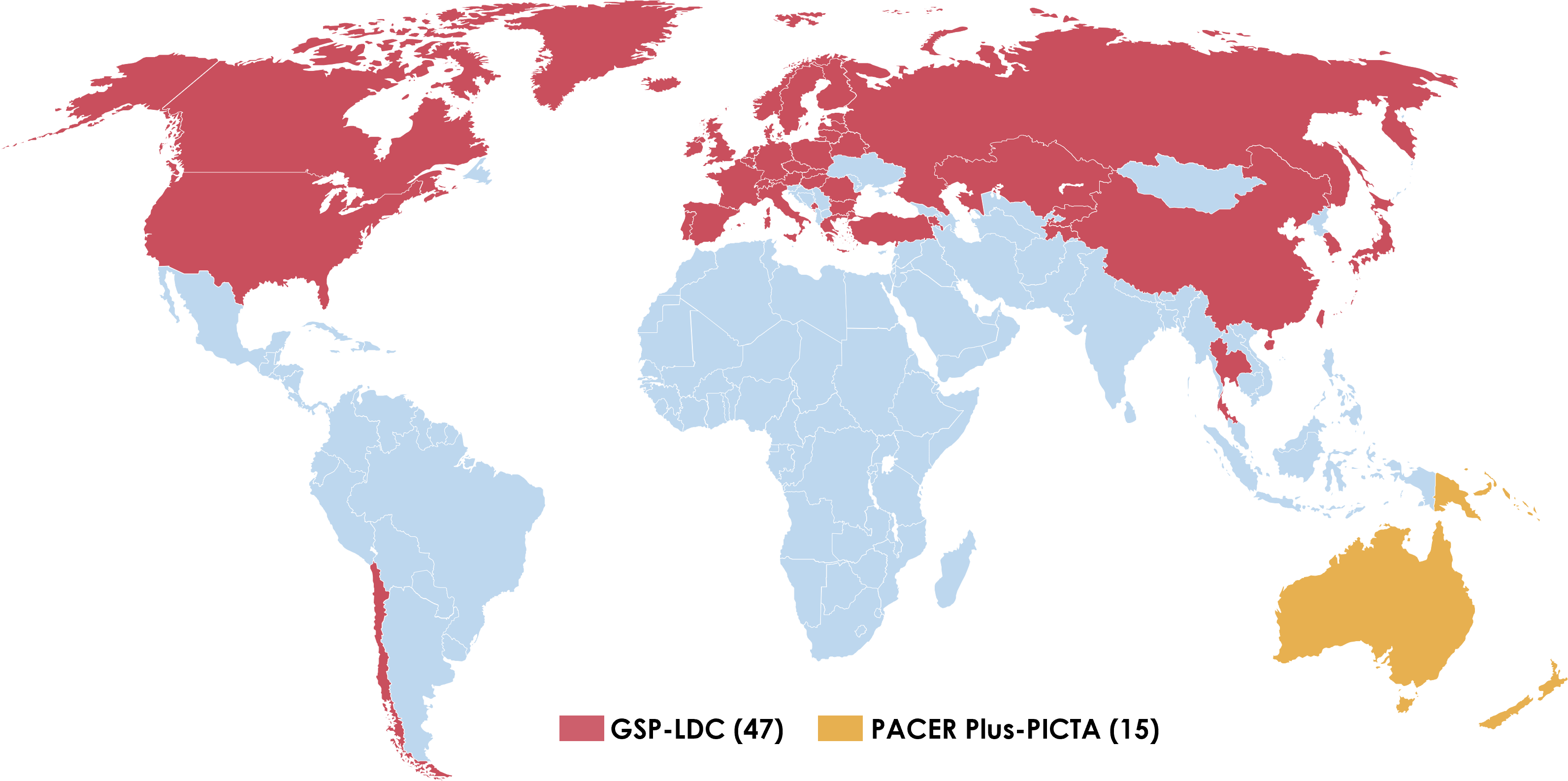
GSP – LDC countries: Armenia, Belarus, Canada, Chile, China, European Union, Iceland, Japan, Kazakhstan, South Korea, Kyrgyzstan, Montenegro, Norway, Russia, Switzerland, Tajikistan, Thailand, Taipei, Turkey, United Kingdom and USA*.
PACER Plus-PICTA countries: Australia, Cook Islands, Fiji, Kiribati, Marshall Islands, Micronesia, Nauru, New Zealand, Niue, Palau, Papua New Guinea, Samoa, Solomon Islands, Tonga, Tuvalu, Vanuatu. - Source: MacMap.org
Solomon Islands' international trade
- Rising import demand: Over the past five years, imports into Solomon Islands have grown at an average annual rate of 5.8%, peaking at US$595.9 million in 2023. This steady increase reflects rising domestic demand, greater consumer activity, and expanding economic engagement with international markets.
- Trade balance surplus: Despite an average annual decline of 1.1% in exports, Solomon Islands remains one of only three Pacific countries to maintain a trade balance surplus, alongside Papua New Guinea and Micronesia. This highlights the continued strength of its export base, particularly in natural resources.
- Top export destinations: China, Australia, and Italy are the top three destinations for Solomon Islands’ exports, together accounting for more than 82% of total export flows. This concentration underscores the importance of established trade relationships with both regional and global markets.
- Leading import providers: China, Singapore, and Australia emerge as the leading sources of imports for Solomon Islands, collectively supplying over 68% of total inflows. These partnerships reflect the country’s growing reliance on diversified supply chains and its deepening integration with key Asia-Pacific economies.
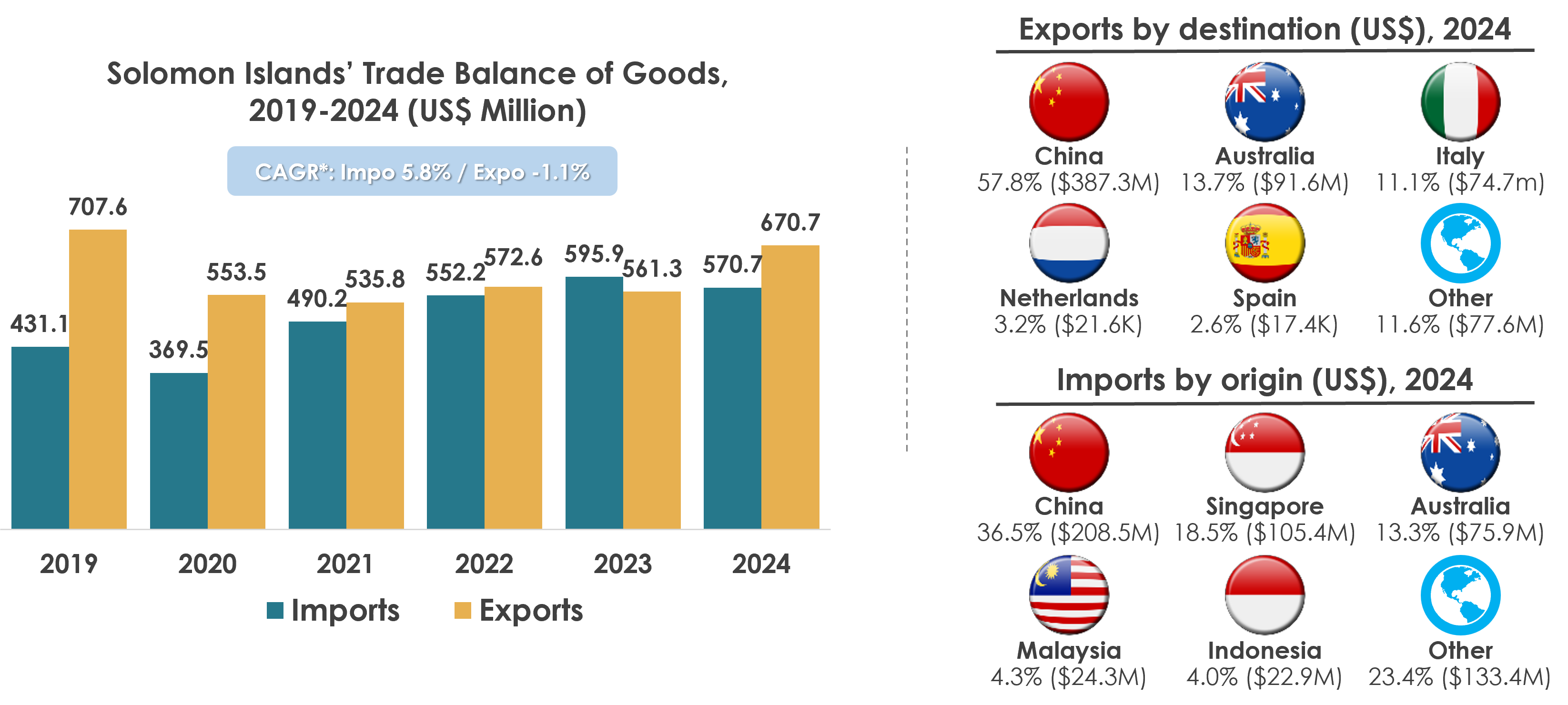
*CAGR: Compound annual growth rate. - Source: www.TradeMap.com
- Concentrated export mix: The country’s exports are heavily concentrated, with rough wood standing out as the single largest product, making up 43.5% of total export flows. This is followed at a considerable distance by processed fish (13.4%) and gold (13.4%). Taken together, these three products alone account for around 70% of the nation’s total exports, highlighting the reliance on a narrow set of commodities.
- Diverse import portfolio: Imports, by contrast, are spread across a much wider range of products. Among them, mineral fuels, machinery and mechanical appliances, and electrical machinery and electronics are the most significant categories. These three alone make up more than 37% of total imports, underscoring the variety of goods sourced from abroad to meet domestic demand.
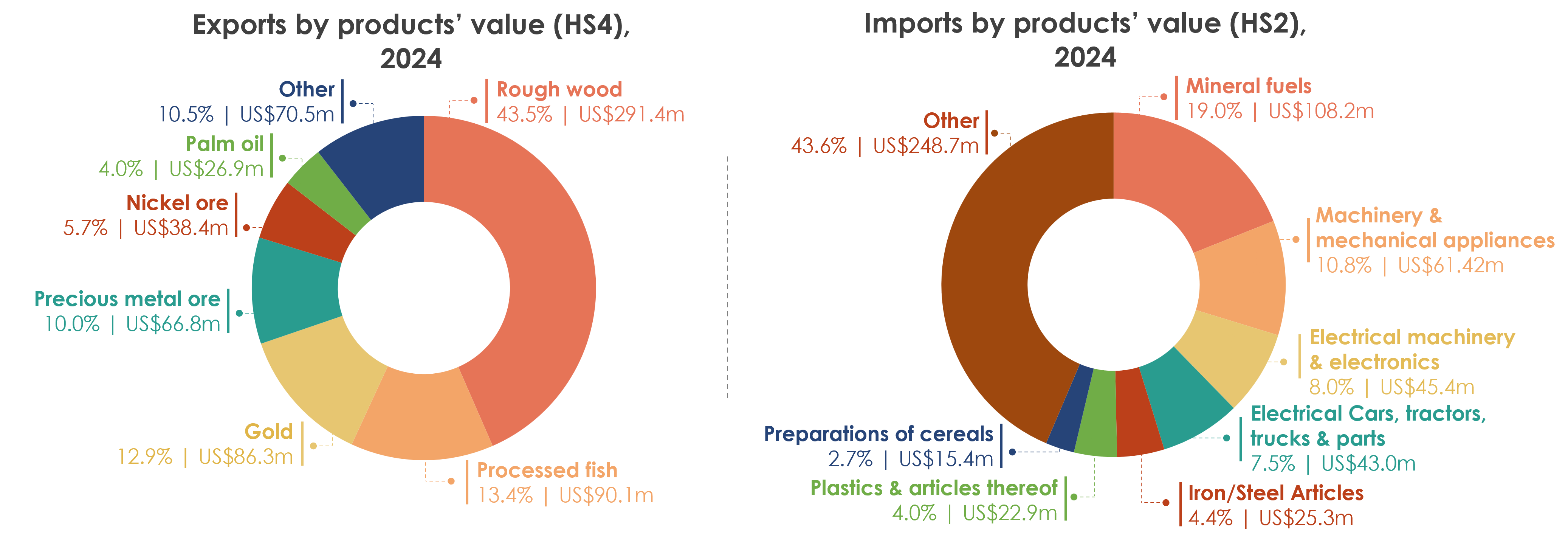
HS4-2: Harmonized system at 4-digit code (heading) and 2-digit code (chapter). - Source: www.TradeMap.com (Based on mirror statistics due to the absence of up-to-date official data)
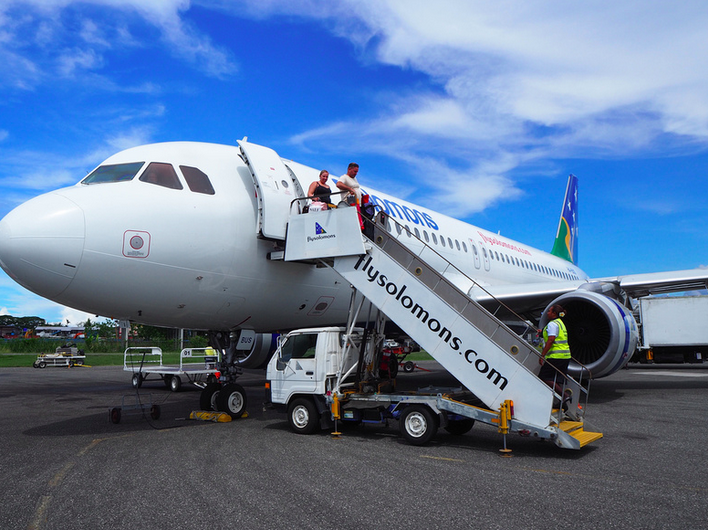
Solomon Islands' connectivity by air
- Accessible by air: The Solomon Islands is well connected to the wider Pacific region, offering more than 15 direct weekly flights to 4 international destinations. This level of service provides reliable access for both business and leisure travelers, ensuring that the country maintains a steady flow of international connections.
- Main international entry point: Honiara International Airport (HIR), located in Guadalcanal Province, acts as the nation’s principal gateway and remains the only fully operational international airport. While Munda International Airport has international designation, it currently operates only domestic flights, highlighting the central role of Honiara as the hub for global access.
- Domestic connectivity: Beyond international access, the Solomon Islands benefits from strong domestic air links, with more than 20 additional airports and airfields distributed across the archipelago. These connections, largely operated by Solomon Airlines, enable efficient movement of people and goods between islands, supporting tourism, trade, and community links across the nation.
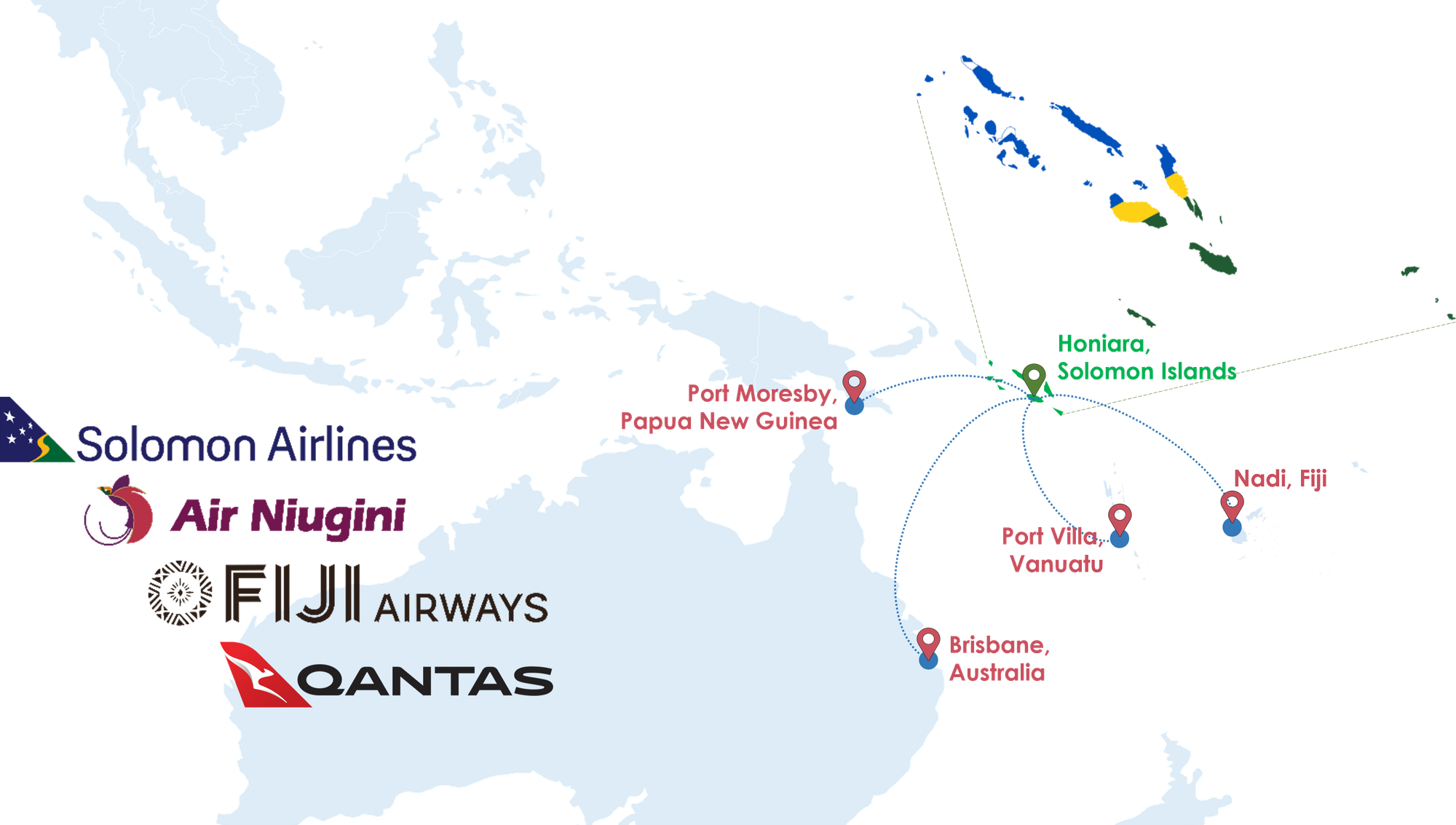
Note: Information only as reference. Air routes and airlines may change due to latest updates. - Source: www.flightconnections.com/
Solomon Islands' maritime connectivity
- Solomon Islands Ports Authority (SIPA): The management of the country’s maritime gateways is overseen by SIPA, which operates the ports of Honiara and Noro. These two facilities serve as the principal entry points for international shipping, playing a vital role in facilitating trade and the movement of goods across the islands.
- Honiara Port: As the nation’s primary trade gateway, Honiara Port is equipped with container, bulk cargo, and oil terminals, alongside a deep-water wharf and passenger jetty. The port provides storage capacity for up to 1,000 containers and operates two berths capable of accommodating vessels up to 150 meters in length with a depth of 11.5 meters. Through its Green Port program, the facility is also positioning itself as a sustainability leader in the Pacific, aiming to achieve carbon neutrality by 2030.
- Shipping network: The Solomon Islands benefits from regional integration through three international shipping lines that provide direct overseas connections to six countries across the Pacific and beyond. This ensures regular maritime access for exports and imports, strengthening trade flows and supply chain reliability.
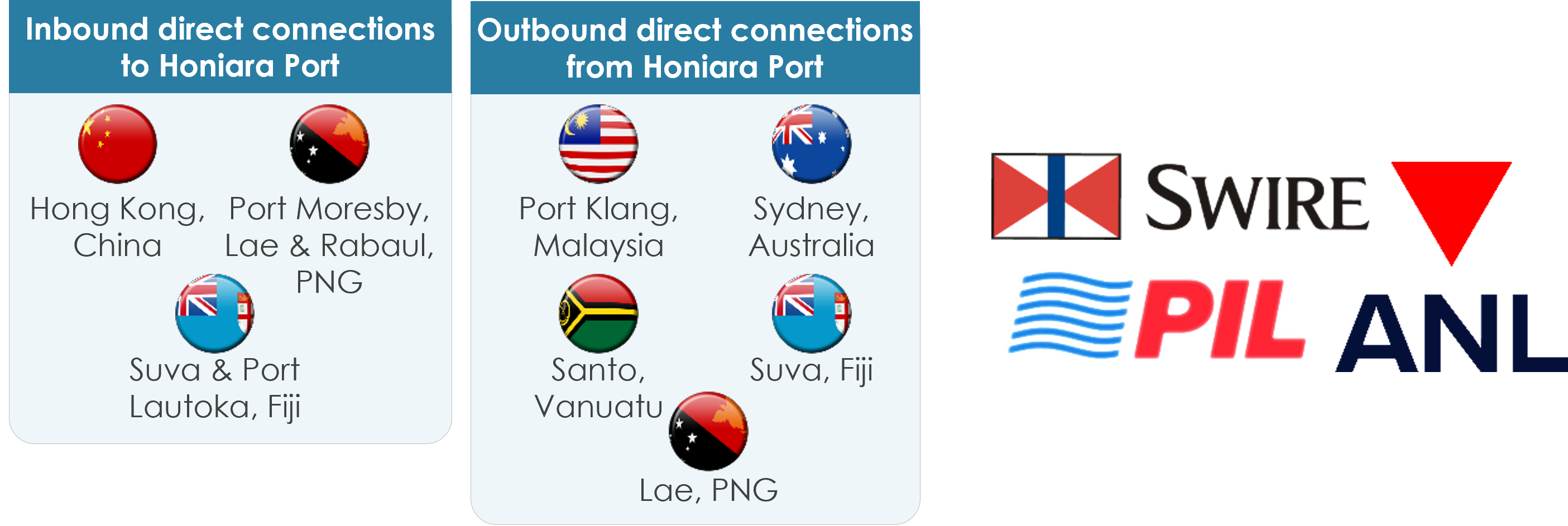
Note: Information only as reference. Cargo routes and lines may change due to latest updates. - Source: https://www.fluentcargo.com/insights/ports?place=Solomon+Islands&port=locode+SBHIR - https://www.sipa.com.sb/
Solomon Islands’ Exclusive Economic Zone
3rd largest exclusive economic zone in the Pacific region and 23rd in the world, covering 1.58 million km² of marine territory, creating opportunities for fisheries, aquaculture, and ocean-based industries, positioning the country as a leading Blue Economy destination.
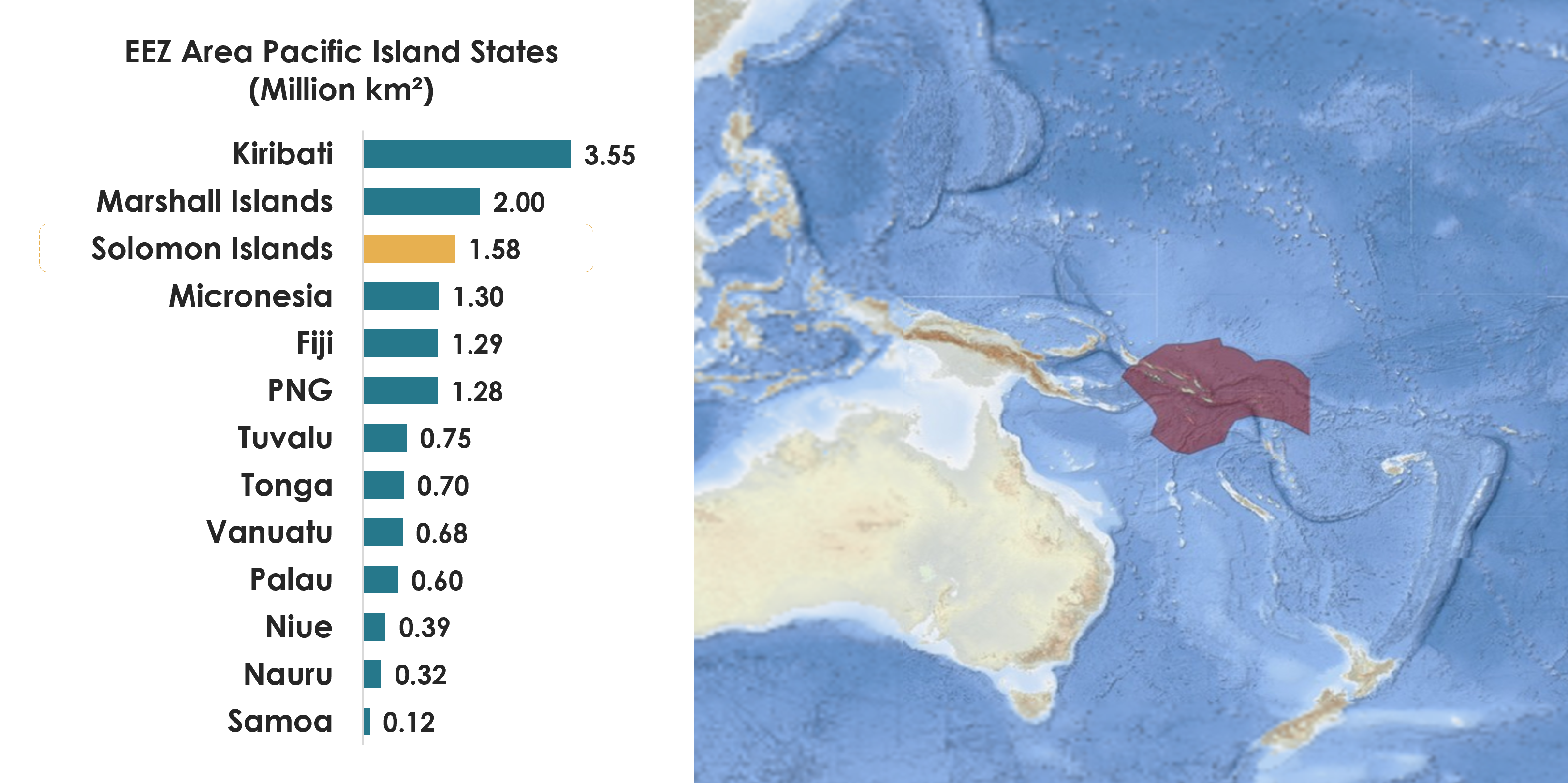
Source: https://www.marineregions.org/